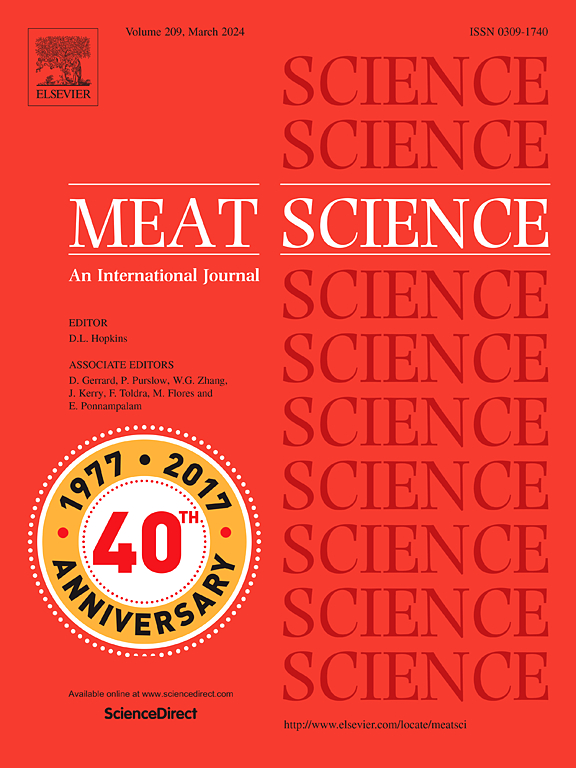Prediction of dark cutting carcasses in cattle using machine learning algorithms with stockperson actions and animal behaviors at abattoir: A study in Türkiye
IF 6.1
1区 农林科学
Q1 Agricultural and Biological Sciences
引用次数: 0
Abstract
The aim was to investigate the relationship between stockperson actions, animal behaviors at the abattoir, and the occurrence of dark cutting in cattle using various machine learning (ML) algorithms. Season, age, sex, breed, carcass bruising score, carcass weight, and various transportation-related variables were also considered as covariates and potential predictors of dark cutting. Data was collected from 648 cattle, including Holstein, Brown Swiss, and Simmental breeds. The percentage of dark cutting carcasses was 6.64 %. The synthetic minority oversampling technique (SMOTE) was used to transform unbalanced dataset into balanced one. ML was applied with four different models, defined based on the inclusion of covariates, stockperson actions, and animal behaviors as predictors. The highest accuracy value (0.97) was obtained with Boosting algorithm. In all algorithms, the highest accuracy values were achieved with models that included stockperson actions as predictors. Age, prod use and beating at slaughter corridor, and lairage type were most important features influencing dark cutting according to Boosting algorithms. In conclusion, the classification of normal and dark cutting carcasses can be achieved with a satisfactory accuracy using the Boosting and Random Forest algorithms with the model including stockperson actions, animal behaviors and various covariates. However, this study reflects local cattle handling practices in Türkiye; further studies are needed to explore cattle handling practices in other countries.
利用机器学习算法与屠宰场的饲养员动作和动物行为预测牛的暗切尸体:一项在 rkiye上的研究
目的是使用各种机器学习(ML)算法调查牲畜饲养员行为、屠宰场动物行为和牛的暗切现象之间的关系。季节、年龄、性别、品种、胴体瘀伤评分、胴体体重和各种运输相关变量也被认为是暗切的协变量和潜在预测因子。数据收集自648头牛,包括荷斯坦、瑞士布朗和西门塔尔品种。黑切尸率为6.64%。采用合成少数派过采样技术(SMOTE)将不平衡数据集转换为平衡数据集。机器学习应用于四种不同的模型,这些模型是基于协变量、库存人员行为和动物行为作为预测因子来定义的。boost算法的准确率最高,为0.97。在所有算法中,使用包括库存人员行为作为预测因子的模型获得了最高的准确性值。根据Boosting算法,年龄、棍棒使用和屠宰走廊殴打、放养类型是影响暗切的最重要特征。综上所述,采用boost和Random Forest算法,在包含饲养员动作、动物行为和各种协变量的模型下,可以获得满意的准确率。然而,这项研究反映了基耶岛当地的牛处理做法;需要进一步的研究来探索其他国家的牛的处理方法。
本文章由计算机程序翻译,如有差异,请以英文原文为准。
求助全文
约1分钟内获得全文
求助全文
来源期刊

Meat Science
工程技术-食品科技
CiteScore
12.60
自引率
9.90%
发文量
282
审稿时长
60 days
期刊介绍:
The aim of Meat Science is to serve as a suitable platform for the dissemination of interdisciplinary and international knowledge on all factors influencing the properties of meat. While the journal primarily focuses on the flesh of mammals, contributions related to poultry will be considered if they enhance the overall understanding of the relationship between muscle nature and meat quality post mortem. Additionally, papers on large birds (e.g., emus, ostriches) as well as wild-captured mammals and crocodiles will be welcomed.
 求助内容:
求助内容: 应助结果提醒方式:
应助结果提醒方式:


